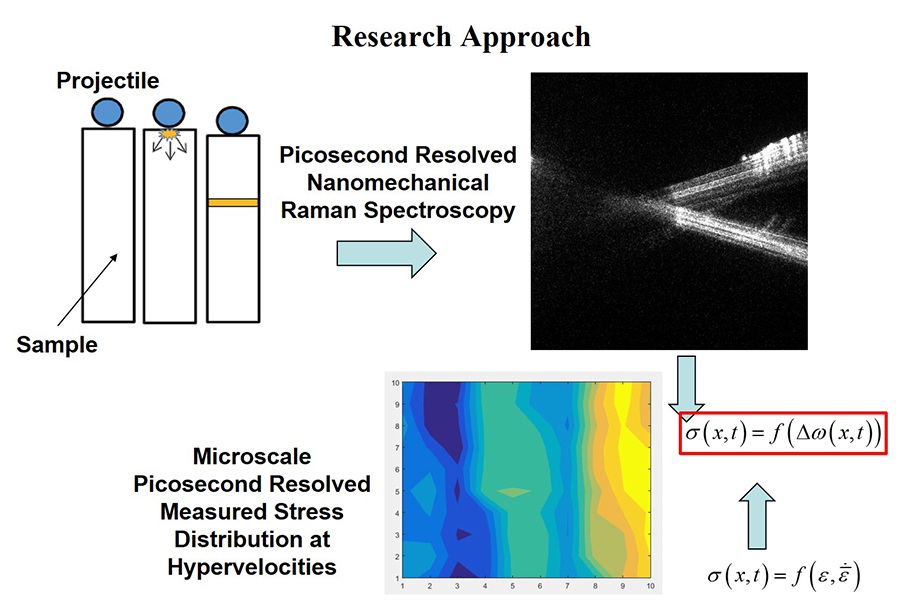Purdue, AAE play key research role in MURI grant focused on energetic materials and machine learning

In collaboration with six universities, Purdue was awarded a Multidisciplinary University Research Initiative (MURI) award from the Department of Defense (DoD) to build a capability to allow scientists to predict the behavior of energetic materials using advanced machine learning tools, which cover a wide range of applications including military munitions, propellants, pyrotechnics, and industrial explosives.
The University of Missouri is the principal investigator on the project that includes researchers from Purdue, the University of Illinois, the University of Iowa, the University of Illinois-Chicago, Columbia University, and the Rensselaer Polytechnic Institute in New York.
The team was awarded $1.5 million per year for up to five years by the Air Force Office of Scientific Research. Only 24 research teams were awarded MURI grants, which pursue basic research spanning multiple scientific disciplines.
AAE Professor Vikas Tomar says the project, “Integrating Multiscale Modeling and Experiments to Develop a Meso-Informed Predictive Capability for Explosives Safety and Performance,” will address a long-standing problem that never has been addressed before.
“So far, a significant focus of energetic materials research has been on material processing. However, microstructures for such materials have random character making them unsuitable for systematic microstructural characterization tools available for other materials such as metals or ceramics,” Tomar says. “This characteristic makes these materials also suitable for data science tools incorporating machine learning, a focus of the proposed work. Purdue’s Interfacial Multiphysics Lab has unique capabilities to perform high throughput experimental measurements of thermal and mechanical properties in energetic materials at nanometers to micrometers length scales with picosecond time resolution, a key requirement for models needed for the proposed work.”
Tommy Sewell, a professor at Missouri who is the PI on the project, says the team will use artificial intelligence or machine learning to sift through mountains of experimental and simulated data and to identify correlations in the data that scientists might miss. But he also says machine learning will only take his team so far.
“If all that you seek is knowledge, maybe that is good enough for some purposes, but it’s not good enough for us,” Sewell says. “What we seek is understanding, and that comes from ‘carbon-based’ computing (human thought and physical models), not silicon-based. A long-term goal is to minimize the amount of experimentation and the assorted costs and do most of the work in computer simulations, and then use experimentation to validate the results. If we’re successful, we will end up with a framework that can be adapted to treating the initiation phenomenon for a wide variety of explosives.”
Another goal is to reduce accidents involving energetic materials, Sewell says. If rocket propellant transitions from a stable burn over to a detonation, it can result in catastrophic consequences.
“What we are trying to do … is to develop a theoretical framework that will allow us to derive the next generation of reactive burn models that are far more predictive than models currently in use,” Sewell says. “The goal is to reduce accidents, to improve safety, and to be able to design energetic formulations that would have much more tightly tailored performance.”
SOURCE: University of Missouri
